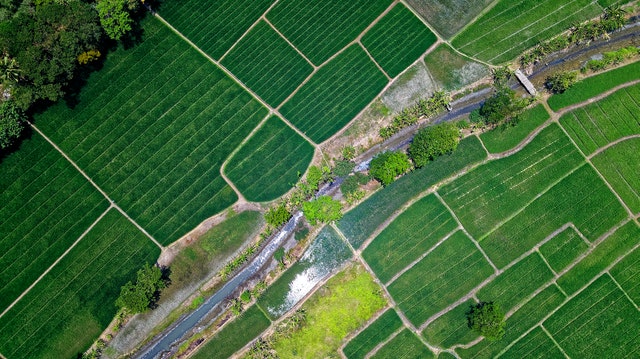6. Small and Fragmented Land Holdings

The apparent abundance of net planted area and total cropped land of 189.7 million hectares (1999-2000) is dwarfed by the fact that it is fragmented into economically unviable small and scattered farms.
In 1970-71, the average holding size was 2.28 hectares, which decreased to 1.82 hectares in 1980-81 and 1.50 hectares in 1995-96. With the limitless subdivision of land holdings, the size of the holdings will shrink even further.
Small and fragmented holdings are a particular problem in highly inhabited and intensively cultivated states like Kerala, Bihar, West Bengal, and the eastern section of Uttar Pradesh, where the average size of land holdings is less than one hectare, and in some places less than 0.5 hectare.
Rajasthan, with its huge stretches of sand, and Nagaland, with its prevalent 'Jhoom' (shifting agricultural), have bigger average holdings of 4 and 7.15 hectares, respectively. Punjab, Haryana, Maharashtra, Gujarat, Karnataka, and Madhya Pradesh have holding sizes that are larger than the national average due to their high percentage of net sown area.
Furthermore, a high percentage of 59 percent of holdings in 1990-91 were marginal (less than 1 hectare), accounting for 14.9% of the total operational area. Small holdings (1-2 hectares) made up another 19% of the total operational area, accounting for 17.3% of the total.
Large holdings (above 10 hectares) made up only 1.6% of overall holdings but 17.4% of the managed area. As a result, there is a significant disparity between small, medium (peasant group), and large farmers (landlords).
Our inheritance laws are the primary cause of this terrible state of affairs. The land that belongs to the father is divided equally among his sons. This geographical distribution does not imply a collection or consolidation, rather it is fragmented by nature.
Different tracts have varying amounts of fertility, and they must be dispersed appropriately. If there are four land tracts to be divided between two sons, each son will receive a smaller piece of each tract. With each passing generation, the holdings get smaller and more dispersed.
One of the key causes of our low agricultural output and backward position is the subdivision and fragmentation of holdings. Moving seeds, manure, implements, and animals from one piece of land to another wastes a lot of time and effort.
On such small and fragmented areas, irrigation becomes impossible. Furthermore, much productive agricultural land is squandered on the construction of fences. In such situations, the farmer is unable to focus on improvement.
The only solution to this vexing situation is to consolidate holdings, which entails reallocating fragmented holdings and establishing farms with only one or a few parcels instead of the number of patches formerly in each peasant's possession.
Unfortunately, this strategy has not fared well. Although practically all states have passed legislation allowing for the consolidation of properties, it has only been implemented in Punjab, Haryana, and sections of Uttar Pradesh.
In Punjab, Haryana, and western Uttar Pradesh, nearly 45 million assets were consolidated till 1990-91. Cooperative farming is another answer to this challenge, in which farmers combine their resources and split the profits.